- Administrator
- Albums and Singles
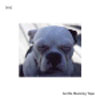 Having listened to and zoned out on this release at least half a dozentimes, it should be obvious what it is that is so compelling about[sic]'s compositions of dusty long drones, deep ambient spaces andbump-in-the-night tension, but it's not. On the one hand, this isdifficult listening: all uneasy sounds and dischordant timbres rubbingup against one another to create an ambiguous feeling of dread. On theother hand, for those familiar with the work of like-minded artistslike those featured on the quasi-legendary "Isolationism" compilation,[sic] fits perfectly into a already-defined niche of dark, broodingambient characterized more by its claustrophobia than by its usereflection of space as an expanse. I could tell you that Gorilla Masking Tapeis a beautiful, haunting record, or that it's alpha-wave inducing atthe right volume, or that it's a perfectly quiet record for people wholead unquiet lives, but none of that really captures the force thatthese tracks embody. Perhaps the record's most defining characteristicis that it is indeed so malleable that it can be both loud and quiet,both serene and disturbed, both beautiful and terrifying and that itdoes all of this effortlessly. I often wonder what more can be saidabout music like this that is both barely there and a force of natureall at once, depending on your volume knob. I always think that it willbe impossible for someone to release yet another essential darkambient disc in a world where artists who do this sort of thing tend tohave voluminous discographies of equally affecting work already. Ithink that, and then I hear a record like Gorilla Masking Tapeand it suddenly all sounds fresh and important and essential again andI'm left wanting more. It doesn't get much better than that.
Having listened to and zoned out on this release at least half a dozentimes, it should be obvious what it is that is so compelling about[sic]'s compositions of dusty long drones, deep ambient spaces andbump-in-the-night tension, but it's not. On the one hand, this isdifficult listening: all uneasy sounds and dischordant timbres rubbingup against one another to create an ambiguous feeling of dread. On theother hand, for those familiar with the work of like-minded artistslike those featured on the quasi-legendary "Isolationism" compilation,[sic] fits perfectly into a already-defined niche of dark, broodingambient characterized more by its claustrophobia than by its usereflection of space as an expanse. I could tell you that Gorilla Masking Tapeis a beautiful, haunting record, or that it's alpha-wave inducing atthe right volume, or that it's a perfectly quiet record for people wholead unquiet lives, but none of that really captures the force thatthese tracks embody. Perhaps the record's most defining characteristicis that it is indeed so malleable that it can be both loud and quiet,both serene and disturbed, both beautiful and terrifying and that itdoes all of this effortlessly. I often wonder what more can be saidabout music like this that is both barely there and a force of natureall at once, depending on your volume knob. I always think that it willbe impossible for someone to release yet another essential darkambient disc in a world where artists who do this sort of thing tend tohave voluminous discographies of equally affecting work already. Ithink that, and then I hear a record like Gorilla Masking Tapeand it suddenly all sounds fresh and important and essential again andI'm left wanting more. It doesn't get much better than that.Read More
- Michael Patrick Brady
- Albums and Singles
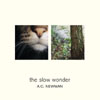 A is a definite article, a method of distinguishing an individual froma group, singling out the one particular subject that deserves all theattention. I don't know the true origins of that particular A, theabove definition would certainly make Carl Newman's self-amendeddesignation quite the aptonym. The Slow Wonderis an A, a defining article that raises Carl Newman from the crowdedhouse he built for the New Pornographers to his very own center stage.Newman is out this time with a collection of even newer rock and rollpornographers who are every bit as dig-deep tenacious and blissfullysonorous. The Slow Wonder is a further refinement of the ideas swirled across Mass Romantic and honed on The Electric Version.Newman has emerged from behind the curtain with a slab of popperfection, matching the heights of those previous records whileshowcasing a more personal stake in the music, as opposed to thecommunal conceptualism of the Pornographer records. "The Miracle Drug"is an assuring opener, almost alarmingly familiar with vocalist SarahWheeler backing up to fill in the Neko Case role (with such quality asto arouse curiosity as to what she might sound like out in front). Thesonic similarities only serve to demonstrate Newman's persisting talentin knowing what makes a great song and the ability to do so freshly, atwill. The melodious "On The Table" politely drips across the pianokeyboard with a dignified reserve before soaring into a kaleidoscopicrush of unbridled enthusiasm in the chorus. Amidst the crowd pleasersis "Come Crash," a gorgeous ballad that slowly probes the innerworkings of an obscure relationship. While never revealing too much indirect statements, the song instead pieces the story together throughthe shadows cast by the firework bursting bridge and shards ofconversation that slowly flicker and fade. It is a wonderfulcenterpiece to the album, and a more introspective side of Newman thanmost of us have been treated to. "The Town Halo" rockets the album skyhigh once again, thickly rooted in a repeating loop of strings, surgingforward in a thrust of accusatory questioning and boundary marking.Along with the closer, "35 In The Shade," the song surrounds Newmanwith a throng of background singers, lending their collective voices tothe music he has crafted. This aspect of the album seems perfectlynatural, as it is hard to resist joining in. Newman is a songwriter ofthe highest caliber, one who is capable of implanting a song deepwithin the psyche and coaxing it back out once again through the voicesof listeners. The Slow Wonder outputs nothing but unabashed joy through song and demands nothing less back.
A is a definite article, a method of distinguishing an individual froma group, singling out the one particular subject that deserves all theattention. I don't know the true origins of that particular A, theabove definition would certainly make Carl Newman's self-amendeddesignation quite the aptonym. The Slow Wonderis an A, a defining article that raises Carl Newman from the crowdedhouse he built for the New Pornographers to his very own center stage.Newman is out this time with a collection of even newer rock and rollpornographers who are every bit as dig-deep tenacious and blissfullysonorous. The Slow Wonder is a further refinement of the ideas swirled across Mass Romantic and honed on The Electric Version.Newman has emerged from behind the curtain with a slab of popperfection, matching the heights of those previous records whileshowcasing a more personal stake in the music, as opposed to thecommunal conceptualism of the Pornographer records. "The Miracle Drug"is an assuring opener, almost alarmingly familiar with vocalist SarahWheeler backing up to fill in the Neko Case role (with such quality asto arouse curiosity as to what she might sound like out in front). Thesonic similarities only serve to demonstrate Newman's persisting talentin knowing what makes a great song and the ability to do so freshly, atwill. The melodious "On The Table" politely drips across the pianokeyboard with a dignified reserve before soaring into a kaleidoscopicrush of unbridled enthusiasm in the chorus. Amidst the crowd pleasersis "Come Crash," a gorgeous ballad that slowly probes the innerworkings of an obscure relationship. While never revealing too much indirect statements, the song instead pieces the story together throughthe shadows cast by the firework bursting bridge and shards ofconversation that slowly flicker and fade. It is a wonderfulcenterpiece to the album, and a more introspective side of Newman thanmost of us have been treated to. "The Town Halo" rockets the album skyhigh once again, thickly rooted in a repeating loop of strings, surgingforward in a thrust of accusatory questioning and boundary marking.Along with the closer, "35 In The Shade," the song surrounds Newmanwith a throng of background singers, lending their collective voices tothe music he has crafted. This aspect of the album seems perfectlynatural, as it is hard to resist joining in. Newman is a songwriter ofthe highest caliber, one who is capable of implanting a song deepwithin the psyche and coaxing it back out once again through the voicesof listeners. The Slow Wonder outputs nothing but unabashed joy through song and demands nothing less back.Read More
- Administrator
- Albums and Singles
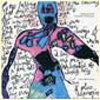 Though Steven Stapleton could not be bothered to play at the recent Toronto shows, he did come to the city to lurk about the concert hall, bringing along 500 copies of this 7" red vinyl single. As limited Nurse With Wound items go, this one is fairly inessential to all but the most rabid collectors.United Durtro/Jnana
Though Steven Stapleton could not be bothered to play at the recent Toronto shows, he did come to the city to lurk about the concert hall, bringing along 500 copies of this 7" red vinyl single. As limited Nurse With Wound items go, this one is fairly inessential to all but the most rabid collectors.United Durtro/Jnana
Side A is taken up with "Penis Fruit Loop (Deambulation Mix)," a radically reworked version of the track from 1999's An Akward Pause. This track already appeared on The Wire Tapper 6 compilation that was included with the 200th of The Wire magazine, along with exclusive tracks by Current 93 and Coil. A while after the magazine debuted, Stapleton posted an MP3 of the track to the web for free download, complaining that the song had been mastered incorrectly on the Wire Tapper CD. The version on this single does not sound significantly different from either of those previously available tracks, an oompah band playing "Johnny B. Goode" while being sucked down a vacuum hose. What I do find strange is the speed at which the track has been mastered. To hear it correctly, you must play Side A at 33 RPM, even though Side B seems to be mastered at 45 RPM, and the packaging gives no indication of this disparity. "A Perfectly Natural Expectation" is exclusive to this release, as far as I know, a flashback of sorts to the queasy soundscapes of Automating Vol. 1. After a little girl intones the title, we are ushered through bizarre corridors of echoplexed sound, before being dropped off a couple minutes later right where we began. It's inessential to be sure, but also pretty nifty. As of this writing, this release and the other Toronto items were still available through a link at the Durtro website, so there's still a chance for those not lucky enough to have attended the shows.
Read More
- Administrator
- Albums and Singles
 This limited edition, blue 7" vinyl single comprises two songs recordedlive at the October Gallery in London on October 5, 2003. Both of thesongs are done in the intimate "voice and piano" style familiar fromCurrent 93 releases such as Soft Black Stars and Hypnagogue,with Maja Elliott providing the musical accompaniment. Side A has DavidTibet tackling the singularly epic "Time of the Last Persecution," thetitle track from underappreciated singer-songwriter Bill Fay's materful1971 concept album. Fay's original version had all the dramaticorchestral swells of a sixties Scott Walker production, augmented bymind-blowing fuzz guitar and a truly monumental climax. For all theoverblown majesty of the original, however, the song holds up amazinglywell with the minimal arrangement by Tibet and Elliott. Tibet's voiceis a perfect instrument to portray the resigned dread of Bill Fay'sArmageddon scenario: "It is the time of the last persecution/And Caesarshall be raised/He will ask for his feet to be kissed by yoursister/And your children will fear at his name." It's as if Tibet andFay are spiritual songwriting partners, as both share the same affinityfor hallucinatory visions of Gnostic Revelation. Side B is a fine butunremarkable rendition of "Black Flowers, Please," a track off Swastikas for Noddyand a perennial live favorite. For the version of "Time of the LastPersecution" alone, however, this single is worth tracking down. -
This limited edition, blue 7" vinyl single comprises two songs recordedlive at the October Gallery in London on October 5, 2003. Both of thesongs are done in the intimate "voice and piano" style familiar fromCurrent 93 releases such as Soft Black Stars and Hypnagogue,with Maja Elliott providing the musical accompaniment. Side A has DavidTibet tackling the singularly epic "Time of the Last Persecution," thetitle track from underappreciated singer-songwriter Bill Fay's materful1971 concept album. Fay's original version had all the dramaticorchestral swells of a sixties Scott Walker production, augmented bymind-blowing fuzz guitar and a truly monumental climax. For all theoverblown majesty of the original, however, the song holds up amazinglywell with the minimal arrangement by Tibet and Elliott. Tibet's voiceis a perfect instrument to portray the resigned dread of Bill Fay'sArmageddon scenario: "It is the time of the last persecution/And Caesarshall be raised/He will ask for his feet to be kissed by yoursister/And your children will fear at his name." It's as if Tibet andFay are spiritual songwriting partners, as both share the same affinityfor hallucinatory visions of Gnostic Revelation. Side B is a fine butunremarkable rendition of "Black Flowers, Please," a track off Swastikas for Noddyand a perennial live favorite. For the version of "Time of the LastPersecution" alone, however, this single is worth tracking down. - Read More
- Administrator
- Albums and Singles
 Another of Durtro's limited edition goodies available at the recentToronto shows, this is a CDEP of David Tibet singing two of hisfavorite tracks from Simon Finn's Pass the Distance album, with Finnhimself on guitar and Joolie Wood on flute. While Tibet obviously hasaffection for this material, and he is careful not to trod upon itsmemory, he is perhaps a little too respectful with these coverversions. Rather than try to match or exceed Finn's soul-shatteringvocal climax on "Jerusalem," Tibet instead covers the song in hisfamiliar "speak-sing" style, barely cracking his voice for thepenultimate chorus. Also, for some reason known only to him, Tibet hasdecided to cut "The Courtyard" in half, singing only the first part ofthe song. The pretty acoustic backing and flourishes of flute are niceenough, but I don't think they work nearly as well for this material asthe kitchen-sink production of Finn's classic album. The only advantageof hearing Tibet tackle this material is the fact that it renders thelyrics much clearer and easier to decipher, as they are not coveredover by layers of reverb and detuned guitar acrobatics. Still, this EPhas the stink of a vanity project all over it, and while it's fun tolisten to the first few times, I'm not sure it's of any particular useto Current 93 fans or Simon Finn fans.
Another of Durtro's limited edition goodies available at the recentToronto shows, this is a CDEP of David Tibet singing two of hisfavorite tracks from Simon Finn's Pass the Distance album, with Finnhimself on guitar and Joolie Wood on flute. While Tibet obviously hasaffection for this material, and he is careful not to trod upon itsmemory, he is perhaps a little too respectful with these coverversions. Rather than try to match or exceed Finn's soul-shatteringvocal climax on "Jerusalem," Tibet instead covers the song in hisfamiliar "speak-sing" style, barely cracking his voice for thepenultimate chorus. Also, for some reason known only to him, Tibet hasdecided to cut "The Courtyard" in half, singing only the first part ofthe song. The pretty acoustic backing and flourishes of flute are niceenough, but I don't think they work nearly as well for this material asthe kitchen-sink production of Finn's classic album. The only advantageof hearing Tibet tackle this material is the fact that it renders thelyrics much clearer and easier to decipher, as they are not coveredover by layers of reverb and detuned guitar acrobatics. Still, this EPhas the stink of a vanity project all over it, and while it's fun tolisten to the first few times, I'm not sure it's of any particular useto Current 93 fans or Simon Finn fans.Read More
- Administrator
- Albums and Singles
 Current 93's recent concerts in Toronto saw the release of a smalltreasure trove of limited EPs and 7" singles. One of most unexpected ofthese was a five-track CDEP of new material from Simon Finn. If anyhave heard about Finn's activities in the years since he recorded thelegendary Pass the Distance,it's been through rumor and innuendo, and generally falls along thelines of: "Recorded one album then disappeared. Now a[psychotic/drug-addled/lobotomized] hermit, living in [a one-roomshack/his mother's basement/a sanitarium]." Well, the truth might bestranger than the cliché in Finn's case, who moved to Canada, gotmarried and became a soybean farmer, apparently. After David Tibetbecame obsessed with Pass the Distance a year or so ago, hetracked down Simon Finn at his Canada home, and arranged not only forthe reissue of of that seminal LP, but also this EP of new material anda few live gigs opening up for Current 93 for three nights in Toronto.If anyone had asked me to rate the chances of the elusive Simon Finnresurfacing in 2004 to play a series of live shows, I'd have rated thema low zero. I would have further doubted the sanity of someone whosuggested that Finn would ever record new material. Though it couldpotentially be a big embarrassment, Silent City Creep isactually quite good. It's somewhat surreal to hear Finn's voiceunmitigated by the murky echo and bizarre instrumentation to which I'dbecome accustomed. Instead, Finn's voice and gentle acoustic guitarcome through clearly, in five songs that reminded me of Tom Rapp (ofPearls Before Swine), with their Dylanesque melodies and apocalypticlyrics fraught with symbolism and mythological references. On "WalkieTalkie," Finn bemoans the isolation caused by the mediation oftechnology into human communication: "And we all go walkie talkie/Thenwe all go run and hide/Between the cracks of our illusion/From ourdepredated lives/And we hold on to our cocks/And we hold on to ourcunts/To assert we're still alive/And to tell our backs from fronts."Strangely, Silent City Creep does not feel more "mature" than Pass the Distance.In fact, it feels as if Finn hasn't missed a beat, picking up rightwhere he left off over 30 years ago. It makes me wonder if all of thosestories about Syd Barrett might be exaggerated.
Current 93's recent concerts in Toronto saw the release of a smalltreasure trove of limited EPs and 7" singles. One of most unexpected ofthese was a five-track CDEP of new material from Simon Finn. If anyhave heard about Finn's activities in the years since he recorded thelegendary Pass the Distance,it's been through rumor and innuendo, and generally falls along thelines of: "Recorded one album then disappeared. Now a[psychotic/drug-addled/lobotomized] hermit, living in [a one-roomshack/his mother's basement/a sanitarium]." Well, the truth might bestranger than the cliché in Finn's case, who moved to Canada, gotmarried and became a soybean farmer, apparently. After David Tibetbecame obsessed with Pass the Distance a year or so ago, hetracked down Simon Finn at his Canada home, and arranged not only forthe reissue of of that seminal LP, but also this EP of new material anda few live gigs opening up for Current 93 for three nights in Toronto.If anyone had asked me to rate the chances of the elusive Simon Finnresurfacing in 2004 to play a series of live shows, I'd have rated thema low zero. I would have further doubted the sanity of someone whosuggested that Finn would ever record new material. Though it couldpotentially be a big embarrassment, Silent City Creep isactually quite good. It's somewhat surreal to hear Finn's voiceunmitigated by the murky echo and bizarre instrumentation to which I'dbecome accustomed. Instead, Finn's voice and gentle acoustic guitarcome through clearly, in five songs that reminded me of Tom Rapp (ofPearls Before Swine), with their Dylanesque melodies and apocalypticlyrics fraught with symbolism and mythological references. On "WalkieTalkie," Finn bemoans the isolation caused by the mediation oftechnology into human communication: "And we all go walkie talkie/Thenwe all go run and hide/Between the cracks of our illusion/From ourdepredated lives/And we hold on to our cocks/And we hold on to ourcunts/To assert we're still alive/And to tell our backs from fronts."Strangely, Silent City Creep does not feel more "mature" than Pass the Distance.In fact, it feels as if Finn hasn't missed a beat, picking up rightwhere he left off over 30 years ago. It makes me wonder if all of thosestories about Syd Barrett might be exaggerated. Read More
- Administrator
- Albums and Singles
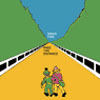 As the current indie scene now falls into lock-step formation rallyingunder the banner of "new folk," I find it interesting to reflect on thefirst folk renaissance, the one that took place five years ago. Youprobably never heard about it because it took place largely in my head.After years spent obsessively listening to and collecting records byCurrent 93, Death in June and Sol Invictus, there weren't many placesfor this jaded listener to go other than the strange, misunderstoodworld of sixties British psych-folk — a loose outcropping ofpsychedelia that incorporated medievalism, folk and free jazz withesoteric lyrical influences and ethnic instrumentation. This music isthe clearest antecedent to the "apocalyptic folk" that resurfaced inthe eighties English underground. Most have at least heard of theIncredible String Band or John Renbourn, but for every famous,influential artist from this period, there were scores of ignoredobscurities like Comus, The Trees and Jan Dukes de Grey. With the helpof an evil book called The Tapestry of Delights, the adventurous (read:compulsive) collector could choose his next Holy Grail and crusadeforth to seek it for his collection. For me, the best of these elusiverecords will always be Pass the Distanceby Simon Finn, an obscure 1970 one-off from London's Mushroom label. Itwas a unique album, not just for its unorthodox musical content, butalso for its extreme rarity, legal action having forced its withdrawalfrom the market not long after is release. Simon Finn's album puzzledme during my original folk renaissance, and five years later — withthis new remastering and rerelease on Durtro/Jnana — it still evadeseasy categorization. Finn's songwriting and vocal style belong to alate-60s tradition of melancholy, doom-laden propheteering, but ontracks like "Jerusalem" and "Big White Car," he displays an unmatchedvocal fury, passionately belting out his words with throat-strippingferocity, building to a pair of frighteningly shattering crescendos.Adding to the album's unique sound are the contributions of the youngmulti-instrumentalist David Toop, who since the recording of Pass the Distance has distinguished himself as a preeminent musical critic, a frequent contributor to The Wireand the author of several books. Toop and percussionist Paul Burwellwere apparently given free reign by producer Vic Keary to use Finn'sstandard folk material as a blank slate for experimentation andimprovisation. This results in a series of loose, chaotic settings forSimon Finn's songs, Toop often climbing up and down the scale of amandolin or a harmonium with utter disregard for melodic sense.Producer and engineer Keary adds another level of mystification, usingheavy echo, stereo panning and excessive phasing to create a sense ofdislocation, muddying the waters of Finn's apocalyptic stream ofconsciousness. This rerelease, overseen by David Tibet and Simon Finn(emerging from more than 30 years of total silence), improves the soundsubstantially from the Japanese bootleg CDs, and adds four bonustracks, which don't share the same mysterious qualities as the materialon the original LP, but are welcome nonetheless. Also included areinformative liner notes from Finn, Toop, Keary and Tibet. This shouldbe a fine replacement for my well-worn vinyl copy.
As the current indie scene now falls into lock-step formation rallyingunder the banner of "new folk," I find it interesting to reflect on thefirst folk renaissance, the one that took place five years ago. Youprobably never heard about it because it took place largely in my head.After years spent obsessively listening to and collecting records byCurrent 93, Death in June and Sol Invictus, there weren't many placesfor this jaded listener to go other than the strange, misunderstoodworld of sixties British psych-folk — a loose outcropping ofpsychedelia that incorporated medievalism, folk and free jazz withesoteric lyrical influences and ethnic instrumentation. This music isthe clearest antecedent to the "apocalyptic folk" that resurfaced inthe eighties English underground. Most have at least heard of theIncredible String Band or John Renbourn, but for every famous,influential artist from this period, there were scores of ignoredobscurities like Comus, The Trees and Jan Dukes de Grey. With the helpof an evil book called The Tapestry of Delights, the adventurous (read:compulsive) collector could choose his next Holy Grail and crusadeforth to seek it for his collection. For me, the best of these elusiverecords will always be Pass the Distanceby Simon Finn, an obscure 1970 one-off from London's Mushroom label. Itwas a unique album, not just for its unorthodox musical content, butalso for its extreme rarity, legal action having forced its withdrawalfrom the market not long after is release. Simon Finn's album puzzledme during my original folk renaissance, and five years later — withthis new remastering and rerelease on Durtro/Jnana — it still evadeseasy categorization. Finn's songwriting and vocal style belong to alate-60s tradition of melancholy, doom-laden propheteering, but ontracks like "Jerusalem" and "Big White Car," he displays an unmatchedvocal fury, passionately belting out his words with throat-strippingferocity, building to a pair of frighteningly shattering crescendos.Adding to the album's unique sound are the contributions of the youngmulti-instrumentalist David Toop, who since the recording of Pass the Distance has distinguished himself as a preeminent musical critic, a frequent contributor to The Wireand the author of several books. Toop and percussionist Paul Burwellwere apparently given free reign by producer Vic Keary to use Finn'sstandard folk material as a blank slate for experimentation andimprovisation. This results in a series of loose, chaotic settings forSimon Finn's songs, Toop often climbing up and down the scale of amandolin or a harmonium with utter disregard for melodic sense.Producer and engineer Keary adds another level of mystification, usingheavy echo, stereo panning and excessive phasing to create a sense ofdislocation, muddying the waters of Finn's apocalyptic stream ofconsciousness. This rerelease, overseen by David Tibet and Simon Finn(emerging from more than 30 years of total silence), improves the soundsubstantially from the Japanese bootleg CDs, and adds four bonustracks, which don't share the same mysterious qualities as the materialon the original LP, but are welcome nonetheless. Also included areinformative liner notes from Finn, Toop, Keary and Tibet. This shouldbe a fine replacement for my well-worn vinyl copy. Read More
- Administrator
- Albums and Singles
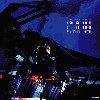 The destruction is set to maximum and the bullshit is set to minimum onPaik's latest full-length, a continuation of the dreamy soundscapesthey most recently displayed on a split with Kinski and Surface ofEceyon. Never have they sounded more pure and raw than this moment, atorrent of distortion and volume that seems at the same time to becoldly calculated and yet to have no plan at all. There is a peaceamong the ruins, where the band almost seems to accept a fate they havenever relished before, nor asked for. But there is ferocity yet, almostas though the fight is with themselves. Not that this ever adverselyaffects any song, or is explicitly stated, but Paik neverthelessdisplay a struggle that elevates them, gives them purpose, andultimately conquers all. Repitition sometimes wears, displaying astasis or lack of ideas that sidetracks but never derails thecompositions: it merely extends them perhaps a bit far past the pointof relevance. They eventually snap out of it and change course,dropping headlong into the maelstrom of their own creation. For a trioto make rock music that blisters and cracks like this is quite anachievement anyway, but Paik excel at it as a practice. The album'sopener, "Jayne Field," is a steady rocker, with almost pots-and-pansdrums and guitar noise that shimmers as much as it shreds. Just as itfades, an abrupt guitar riff buts in, and the playful noise thatemanates skips right along, like a soundtrack for that kid that neverhad it figured out but secretly plots the demise of those who underminehim. By the time the swirls and echoes expand the palette, the storyhas chaned, and the kid gets the girl and all he ever wanted. Here andthere Paik grate their collective teeth, muster the energy to go on,and make it seem like it will be painful for everyone involved. Itnever is, as the band continues to explore and expound, creating thebest music of their careers every time. -
The destruction is set to maximum and the bullshit is set to minimum onPaik's latest full-length, a continuation of the dreamy soundscapesthey most recently displayed on a split with Kinski and Surface ofEceyon. Never have they sounded more pure and raw than this moment, atorrent of distortion and volume that seems at the same time to becoldly calculated and yet to have no plan at all. There is a peaceamong the ruins, where the band almost seems to accept a fate they havenever relished before, nor asked for. But there is ferocity yet, almostas though the fight is with themselves. Not that this ever adverselyaffects any song, or is explicitly stated, but Paik neverthelessdisplay a struggle that elevates them, gives them purpose, andultimately conquers all. Repitition sometimes wears, displaying astasis or lack of ideas that sidetracks but never derails thecompositions: it merely extends them perhaps a bit far past the pointof relevance. They eventually snap out of it and change course,dropping headlong into the maelstrom of their own creation. For a trioto make rock music that blisters and cracks like this is quite anachievement anyway, but Paik excel at it as a practice. The album'sopener, "Jayne Field," is a steady rocker, with almost pots-and-pansdrums and guitar noise that shimmers as much as it shreds. Just as itfades, an abrupt guitar riff buts in, and the playful noise thatemanates skips right along, like a soundtrack for that kid that neverhad it figured out but secretly plots the demise of those who underminehim. By the time the swirls and echoes expand the palette, the storyhas chaned, and the kid gets the girl and all he ever wanted. Here andthere Paik grate their collective teeth, muster the energy to go on,and make it seem like it will be painful for everyone involved. Itnever is, as the band continues to explore and expound, creating thebest music of their careers every time. -Read More
- Michael Patrick Brady
- Albums and Singles
 To innovate, one must not only stand on the shoulders of giants but recognize that they do so, if only to learn how to provide a solid footing for others. Boston-based Cul De Sac are innovators of the highest caliber, and the members have made astounding music for years, utilizing elements of any number of styles, genres, and movements. On their last few releases, guitarist Glenn Jones has led them into a deep relationship with the output of Takoma records and their troika of acoustic guitar virtuosos John Fahey, Robbie Basho, and Leo Kottke. Their adaptations of Takoma sounds and ideas mixed in with often visionary electronic, world music, and post-rock juxtapositions have made for truly wonderful pieces of work. This Is The Wind That Blows It Out marks the first solo release by Glenn Jones, and he revels in the startlingly evocative sound produced by the six and twelve string guitar.
To innovate, one must not only stand on the shoulders of giants but recognize that they do so, if only to learn how to provide a solid footing for others. Boston-based Cul De Sac are innovators of the highest caliber, and the members have made astounding music for years, utilizing elements of any number of styles, genres, and movements. On their last few releases, guitarist Glenn Jones has led them into a deep relationship with the output of Takoma records and their troika of acoustic guitar virtuosos John Fahey, Robbie Basho, and Leo Kottke. Their adaptations of Takoma sounds and ideas mixed in with often visionary electronic, world music, and post-rock juxtapositions have made for truly wonderful pieces of work. This Is The Wind That Blows It Out marks the first solo release by Glenn Jones, and he revels in the startlingly evocative sound produced by the six and twelve string guitar.
Allowed to develop the Takoma fetish to its natural conclusion, Jones is able to create a beautiful work that raises itself above tribute and establishes him as a musician and thinker capable of speaking that language in a thoughtful and articulate way. "Sphinx Unto Curious Men" is an extreme delight to followers of Cul De Sac, as it elaborates on the "Second Victim?" motif from their last release, The Strangler's Wife. Here, Jones draws the thick, oscillating hook out of the unfortunately brief limitations of that soundtrack work and lets it unfurl. His nimble playing conveys a spooky tension that is now even more affecting as it blooms into more developed avenues of melody and rhythm. The new intermediate section of the piece offers a warm respite in looming darkness of the hook, each note stinging through the fog to offer a bit of comfort before ultimately plunging back into the depths. "Sphinx" captures everything that makes Jones an adept aural storyteller, capable of utilizing the strengths of his instrument with clarity and precision. "Friday Nights With" inhabits the same pastoral noir of dark woods and wind swept fields that "Sphinx" introduces, loping across moonlit hills albeit with less curious fear and a tenor of playful chase or dance amidst these elements. The piece is free from the heavy riddle of "Sphinx," a boundless Friday night in the glory of unencumbered abandon. "The Doll Hospital" shimmers as the notes rise and fall with stunning alacrity, flashing briefly and barely fading before the next reveals itself brightly. Jones' fingers cast off sounds in numbers that flood the senses as they try to receive and appreciate every new addition to the impeccable series. "Nora's Leather Jacket" spins about like a carousel, with rapidly repeating strums swirling, augmented by quick plucks that promenade themselves delicately, courting the fancy of those who pass by. For a moment it seems like something out of a Nino Rota score, the carnival wonderment and emotional discourse of La Strada is seeping through Jones' displays of feeling here. Throughout the album, Jones is able to imbue his pieces with a sensitivity and power that instantly communicates the message and input of his music. This Is The Wind That Blows It Out is a noble effort for Glenn Jones and demonstrates that his mastery of his instrument goes well beyond the speed of his fingers and lies in the investment of his mind and soul in his art. - 
Read More
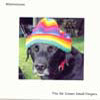 Mnemosyne's debut album builds slowly with a solid if sleepy foundationof guitar, bass, and drums that wouldn't sound out of place in theKranky or Constellation stables. The Toronto trio is fronted (if that'sreally the right word) by experimental guitarist Aidan Baker, whosevoice on the title track rises just barely above a whisper in a stylereminiscent of early Labradford. But from there, Mnemosyne depart fromthe somnambulant formula of muted minimalism by swelling guitars upwith distortion and kicking in drums and crashing cymbals. The resultis a bit darker, more psychadelic, and more varied than their post-rockforebares, but it also results in something that probably has a muchwider appeal. It wouldn't be far off to imagine my stoner friends fromHigh School who went to Pink Floyd laser light shows getting seriouslyinto Mnemosyne's hypnotic twirls of guitar and dubbed-out percussion,but recovering goths will also appreciate the atmosphere of tracks like"Dark Grove" and "Unreal Space." Thankfully, Mnemosyne seem lessconcerned with whether they are impressing the weepy Projekt crowd orthe Drag City chin strokers, and they carry on making moody,genre-hopping space rock. Occassionally, as on the 12 minute albumcloser "Aqualisp," the instrumentation gets a bit too dry and literal,causing the psyche-improv to drift uncomfortably close to jam-bandterritory where it feels like every instrument needs room for a solo.Luckily, Rodin Columb's straightforward bass holds everything togetherjust long enough for the band to get back on track as they rip into theloudest creshendo (saved somewhat predictably for the end). Though theynever really achieve all out ROCK,they do manage to crank the volume, distortion, and delay on everythingto give the album's trip a final dose of hash-fueled paranoia. AlhoughMnemosyne can easily be seen as a confluence of influences that havedone this sort of thing before, their own take on a soundtrack for thatbad-acid trip is well worth exploring. It somehow manages to be bothfamiliar and disorienting at the same time which is kind of creepy, butgood.
Mnemosyne's debut album builds slowly with a solid if sleepy foundationof guitar, bass, and drums that wouldn't sound out of place in theKranky or Constellation stables. The Toronto trio is fronted (if that'sreally the right word) by experimental guitarist Aidan Baker, whosevoice on the title track rises just barely above a whisper in a stylereminiscent of early Labradford. But from there, Mnemosyne depart fromthe somnambulant formula of muted minimalism by swelling guitars upwith distortion and kicking in drums and crashing cymbals. The resultis a bit darker, more psychadelic, and more varied than their post-rockforebares, but it also results in something that probably has a muchwider appeal. It wouldn't be far off to imagine my stoner friends fromHigh School who went to Pink Floyd laser light shows getting seriouslyinto Mnemosyne's hypnotic twirls of guitar and dubbed-out percussion,but recovering goths will also appreciate the atmosphere of tracks like"Dark Grove" and "Unreal Space." Thankfully, Mnemosyne seem lessconcerned with whether they are impressing the weepy Projekt crowd orthe Drag City chin strokers, and they carry on making moody,genre-hopping space rock. Occassionally, as on the 12 minute albumcloser "Aqualisp," the instrumentation gets a bit too dry and literal,causing the psyche-improv to drift uncomfortably close to jam-bandterritory where it feels like every instrument needs room for a solo.Luckily, Rodin Columb's straightforward bass holds everything togetherjust long enough for the band to get back on track as they rip into theloudest creshendo (saved somewhat predictably for the end). Though theynever really achieve all out ROCK,they do manage to crank the volume, distortion, and delay on everythingto give the album's trip a final dose of hash-fueled paranoia. AlhoughMnemosyne can easily be seen as a confluence of influences that havedone this sort of thing before, their own take on a soundtrack for thatbad-acid trip is well worth exploring. It somehow manages to be bothfamiliar and disorienting at the same time which is kind of creepy, butgood.
- Administrator
- Albums and Singles
 Mnemosyne's debut album builds slowly with a solid if sleepy foundationof guitar, bass, and drums that wouldn't sound out of place in theKranky or Constellation stables. The Toronto trio is fronted (if that'sreally the right word) by experimental guitarist Aidan Baker, whosevoice on the title track rises just barely above a whisper in a stylereminiscent of early Labradford. But from there, Mnemosyne depart fromthe somnambulant formula of muted minimalism by swelling guitars upwith distortion and kicking in drums and crashing cymbals. The resultis a bit darker, more psychadelic, and more varied than their post-rockforebares, but it also results in something that probably has a muchwider appeal. It wouldn't be far off to imagine my stoner friends fromHigh School who went to Pink Floyd laser light shows getting seriouslyinto Mnemosyne's hypnotic twirls of guitar and dubbed-out percussion,but recovering goths will also appreciate the atmosphere of tracks like"Dark Grove" and "Unreal Space." Thankfully, Mnemosyne seem lessconcerned with whether they are impressing the weepy Projekt crowd orthe Drag City chin strokers, and they carry on making moody,genre-hopping space rock. Occassionally, as on the 12 minute albumcloser "Aqualisp," the instrumentation gets a bit too dry and literal,causing the psyche-improv to drift uncomfortably close to jam-bandterritory where it feels like every instrument needs room for a solo.Luckily, Rodin Columb's straightforward bass holds everything togetherjust long enough for the band to get back on track as they rip into theloudest creshendo (saved somewhat predictably for the end). Though theynever really achieve all out ROCK,they do manage to crank the volume, distortion, and delay on everythingto give the album's trip a final dose of hash-fueled paranoia. AlhoughMnemosyne can easily be seen as a confluence of influences that havedone this sort of thing before, their own take on a soundtrack for thatbad-acid trip is well worth exploring. It somehow manages to be bothfamiliar and disorienting at the same time which is kind of creepy, butgood.
Mnemosyne's debut album builds slowly with a solid if sleepy foundationof guitar, bass, and drums that wouldn't sound out of place in theKranky or Constellation stables. The Toronto trio is fronted (if that'sreally the right word) by experimental guitarist Aidan Baker, whosevoice on the title track rises just barely above a whisper in a stylereminiscent of early Labradford. But from there, Mnemosyne depart fromthe somnambulant formula of muted minimalism by swelling guitars upwith distortion and kicking in drums and crashing cymbals. The resultis a bit darker, more psychadelic, and more varied than their post-rockforebares, but it also results in something that probably has a muchwider appeal. It wouldn't be far off to imagine my stoner friends fromHigh School who went to Pink Floyd laser light shows getting seriouslyinto Mnemosyne's hypnotic twirls of guitar and dubbed-out percussion,but recovering goths will also appreciate the atmosphere of tracks like"Dark Grove" and "Unreal Space." Thankfully, Mnemosyne seem lessconcerned with whether they are impressing the weepy Projekt crowd orthe Drag City chin strokers, and they carry on making moody,genre-hopping space rock. Occassionally, as on the 12 minute albumcloser "Aqualisp," the instrumentation gets a bit too dry and literal,causing the psyche-improv to drift uncomfortably close to jam-bandterritory where it feels like every instrument needs room for a solo.Luckily, Rodin Columb's straightforward bass holds everything togetherjust long enough for the band to get back on track as they rip into theloudest creshendo (saved somewhat predictably for the end). Though theynever really achieve all out ROCK,they do manage to crank the volume, distortion, and delay on everythingto give the album's trip a final dose of hash-fueled paranoia. AlhoughMnemosyne can easily be seen as a confluence of influences that havedone this sort of thing before, their own take on a soundtrack for thatbad-acid trip is well worth exploring. It somehow manages to be bothfamiliar and disorienting at the same time which is kind of creepy, butgood. Read More

